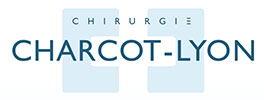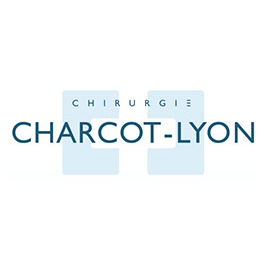What is a sacrococcygeal cyst (KSC) or pilonidal disease?
Pilonidal disease is caused by the penetration of hair into dimples (ruptured hair follicles) located in the intergluteal groove. After a phase of abscess drained either spontaneously or by an incision, definitive healing is an unlikely possibility. In the absence of intervention, the risk is the recurrence of a new painful abscess which will then have to be incised again urgently (antibiotics are useless), or the persistence of chronic suppuration. The risk of cancer in the very long term is very exceptional. Complementary examinations (X-rays of the sacrum and coccyx) are almost always useless. The diagnosis is clinical.
What is the intervention and surgery for sacrococcygeal cyst (KSC) or pilonidal disease?
Technically, several surgical solutions exist. The simplest and most reliable surgery is, under general anesthesia, to remove the lesion and leave the wound open. The healing is then done thanks to the dressings made by a nurse. Closing techniques are rarely used in first intention.
When an abscess is present, your surgeon will perform a surgical flattening (opening to relieve pain) then daily local nursing care will be necessary. Once the healing of this abscess has been obtained, it will be necessary to schedule a second surgery for excision of this sacro-coccygeal cyst (SCC) in order to prevent the recurrence of this abscess. This is a 2-step treatment for your sacro-coccygeal cyst (KSC), the first being the surgical removal of the abscess and the second the excision of this cyst.
In the absence of an abscess during the operation, your surgeon will be able to treat your sacrococcygeal cyst (SCC) in one step by exeresis of this sacrococcygeal cyst (SCC).
What is your journey during surgery for a sacro-coccygeal cyst (KSC)?
After meeting your surgeon, who has confirmed that your sacrococcygeal cyst (KSC) or pilonidal disease should be surgically treated, you will meet your anesthetist who will ensure that general anesthesia is possible.
The day before the operation, you must be fasting from midnight. If you take medication on a daily basis, you should discuss this with your surgeon and your anesthesiologist, who may want you to take some of your medication on the morning of the procedure with a background of water. If you take aspirin or medication to thin your blood, tell your surgeon and your anesthesiologist.
The Charcot clinic team (Lyon) welcomes you on admission, the morning of the operation, checks the administrative formalities, ensures that there is no new information and that the instructions given before intervention (shower, fasting, etc.) have been respected.
Then you are taken to the operating room in the operating room. Your surgeon, your anesthesiologist surrounded by their team welcome you and carry out the usual checks (identity, compliance with instructions, etc.).
Your surgeon, assisted by a nurse, will treat the sacrococcygeal cyst when you are asleep. The duration of the operation varies from 20 to 45 minutes and depends on the size of the cyst.
Once awake, after a few hours in the recovery room, you return to your room. A nurse on the ward makes sure that you are not in too much pain, that you are not nauseous or vomiting, that you gradually come to your senses. A snack is served to you after checking that you are not bleeding. Your surgeon comes by at the end of the day to make sure that you are well, authorizes your discharge if necessary and gives you post-operative instructions.
What happens after surgery for a sacrococcygeal cyst (KSC) or pilonidal disease?
The operation can most often be performed on an outpatient basis or during a short hospital stay. Care is simple, based on gentle washing of the wound and daily dressing. Post-operative care must be carried out in such a way as to obtain healing from the depth to the surface of the wound. Between post-operative visits, monitoring of healing may be carried out by a nurse or a member of your entourage. The total healing time is usually 2 to 3 months, but can be longer. The consequences are little or not painful.
The work stoppage depends on the size of the wound and your professional activity. Intense physical activities should be suspended for the duration of the treatment.
What Complications Can Occur After Surgery for Sacrococcygeal Cyst (SCC) or Pilonidal Disease?
Bleeding from the wound is rare and occurs within 15 days of the operation. Wound infections are exceptional if the care is done carefully. Healing can sometimes be long (several months), it depends on your diet (protein), the extent of excision and your ability to heal.
What to do in case of problems at home after surgery for sacrococcygeal cyst (SCC) or pilonidal disease?
You must absolutely contact your surgeon in case of persistent fever, heavy bleeding or pain that resists the prescribed medication after the procedure. If in doubt, do not hesitate to speak up.
When you leave, the documents provided by your surgeon and/or the nurses in the service include the telephone number of the surgery secretariat and the telephone number of the general practitioner on duty (7 days a week, 24 hours a day) practicing at the Charcot clinic. (Lyons). He can, if he deems it necessary, hospitalize you. Do not hesitate to contact us.
Post-operative advice after surgery for sacrococcygeal cyst (KSC) or pilonidal disease
You are going to leave our service, simple analgesics will be prescribed to you and should be effective. To ensure a speedy recovery, we draw your attention to a few important points. Resume very light activity, walking is allowed, avoid driving for 5 days. It is normal for the surgical area to be painful at first and will remain sensitive for some time. This should not prevent you from moving, walking and carrying out the acts of daily life.
- Precautions
- It is advisable to take showers (the bath is to be avoided for the duration of the nursing care).
- Avoid practicing sports for the duration of nursing care.
- Bandages
It is possible for you to shower completely before carrying out nursing care at home. Before the visit of the nurse, you can remove the dressing on the sacrum as well as the locks and take your shower with your usual soap. Dry with a clean towel, then the nurse can carry out the care in good hygienic conditions.
Your recovery should go smoothly. Come back for a post-operative consultation on the day set for you (usually two months after the operation). This follow-up is essential to ensure your recovery and to control your healing.

